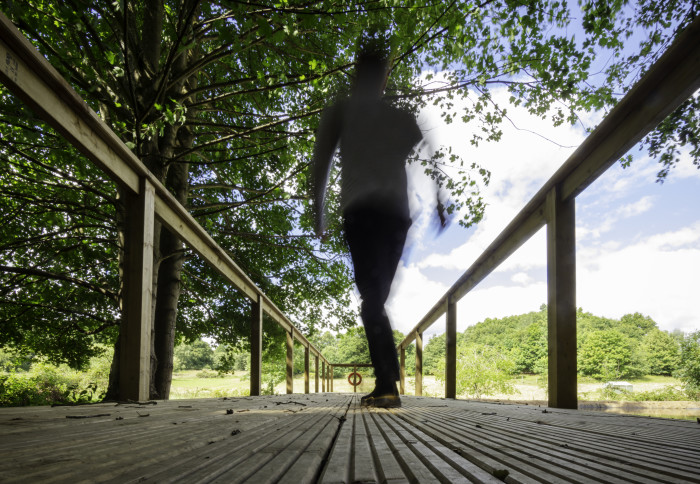Rethinking the relationship between nature and the built environment
by Tim Gordon

Re-Framing, Re-Organising, Re-Choosing - Rethinking the relationship between nature and the built environment
On 29 November 2020 Professor Jennifer Whyte was an invited speaker at The Edge webinar titled It is time for systems change for the construction industry – what will you do? The webinar, which attracted 397 attendees from around the globe, was chaired by Robin Nicholson,partner at Cullinan Studio and Convenor of The Edge.
A large body of evidence, from both research and industry, sets out what needs to be done, and by whom, in order to reduce the construction industry’s carbon footprint. It is in this context that the webinar explored how an extremely complex industry such as the construction one can become fit for purpose in terms of climate change mitigation. This is especially timely in view of the current challenges posed by COVID-19, and of the systems change called for as part of the Hackitt Review.
The event addressed 3 questions:
- What are we learning from our time of lockdown and beyond to change both as individuals and professionals?
- What do we keep and what do we change in the industry?
- If we embrace change, what is our vision for the future? If we don’t, what are the risks?
Prof. Whyte contribution focused on how a systems change for construction needs to put climate change at its heart. She suggested that the vision is already in the policy: the challenge is to make enact that policy. She also proposed that the systems shock caused by the global pandemic is indeed an opportunity for change.
Her talk centred around three key ideas:
- The need to reframe how we think and talk about the relationship between nature and the built environment;
- The fact that transformation requires organizational change; and that
- It is more about technological choice, rather than technological progress.
Based on her own extensive research and intimate knowledge of the industry, Professor Whyte advised that it would be helpful to think in terms of re-framing, re-organising, and re-choosing. So, let’s see in more detail what this new way of framing the debate means, and the advantages it brings.
First: Language and Framing. In lockdown, the Centre for Systems Engineering and Innovation celebrated 10 years. This prompted a lot of reflection around re-framing the thinking about buildings and infrastructure, and therefore where to draw boundaries when modelling them. Professor Whyte stressed that the research community within the Centre is connected into a wider landscape of work, such as the work on Net Zero Pollution in College, and the Buildings and Cities journal, so that it becomes natural to think in terms of the relationship between nature and the built environment. Some scholars focus on the built environment, and see the natural environment as external to the system; others treat the natural environment as an infrastructure system, or see the two as equal, comparable, and potentially inseparable. However, the Centre has a different approach in that it argues the need to see the natural environment as all pervasive: the built environment is our adaptation of the natural environment to suit societal needs. And so projects become seen as interventions into built environment systems.
Second: Re-organizing. Professor Whyte mentioned the work of Professor Joan Woodward, the second woman professor at Imperial College London. In 1965 Professor Woodward started researching management in high performing firms. What she found in her data was that high performing firms that use different forms of production, unit, mass production, continuous process, had different management and organization. The important implication of this is that to change the production system, firms need to change their management and organizational processes as well. This is a point Professor Whyte made when she went to give oral evidence at the Lords Science and Technology Select Committee inquiry on offsite construction. So, systems change is hard because it means reorganizing. That is also why Professor Whyte’s research has looked into how firms change their business models; into the types of systemic innovation needed to reorganize the nature of a construction project; and the nature of work across projects. The latter takes into account things such as platform-based approach to design. Such an approach has started to change the relationship between design, construction and disciplines and, consequently, it has started to change the way we work across different projects.
Third: Choice. Professor Whyte wrapped up her contribution by reflecting on how the outcomes of research on innovation are informing her own, and her colleagues’, teaching. This teaching, which has also been reviewed in light of the impact of the pandemic, is going to form the leaders of the future. As we come out of COVID-19, there are some big choices facing society regarding what our cities and buildings will look like in the future. She concluded by emphasising that the high levels of real policy interest make this a critical moment. The key takeaways she offered in order to facilitate and shape the change needed are around language and framing of the relationship of nature and the built environment; re-organizing and rethinking of production, and technological choice.
Other speakers at the webinar included Dr Dorte Rich Jørgensen who addressed issues around what COVID-19 can teach us in terms of valuable lessons to combat the climate change crisis; Chris Blackwell who focused on different approaches to responding to a crisis; Deborah Anderson who spoke about values in the construction industry and the impact of COVID-19.
Article text (excluding photos or graphics) © Imperial College London.
Photos and graphics subject to third party copyright used with permission or © Imperial College London.
Reporter
Tim Gordon
Department of Civil and Environmental Engineering